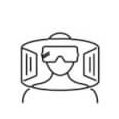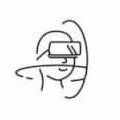Medical Extended Reality (MedXR) Regulatory Science of Surgical Applications
Overview
The MDIC MedXR Regulatory Science of Surgical Applications Project has involved key stakeholders from industry, healthcare, academia, and government to identify testing considerations and open evaluation challenges that impede the development, implementation, and novel applications of MedXR devices across healthcare applications for surgical planning and procedures.
Medical Extended Reality (MedXR) Assessment Framework: Current Landscape and Gap Analysis
This framework document highlights safety and effectiveness considerations and testing approaches or evaluation gaps for MedXR Human Factors and MedXR Image Quality. The chapter on human factors includes a landscape analysis of human factors considerations for MedXR devices for surgical planning and procedures, including healthcare provider safety and user experience, patient safety and user experience, and relevant testing approaches. The chapter on image quality includes a landscape analysis of image quality and visualization accuracy considerations and testing for these devices, including lessons learned and degree of overlap with 2D display evaluation methods.
Learn more about the active MDIC MedXR Workgroups!
The MDIC MedXR Landscape Analysis of Surgical Applications Workgroup is comprised of leaders in MedXR, its medical applications, and assessment, who have set for themselves the ambitious vision to advance the safe and effective implementation and evaluation of MedXR devices. They aim to accelerate the development of MedXR devices across application spaces, with an initial focus on surgical planning and procedures, to the ultimate benefit of patients.
The group is a learning community that has come together biweekly for over a year to answer questions about the cutting edge of AR/VR devices today, how they should be assessed, what drives innovation and adoption, and future impact the devices will have on patient care and the digital transformation of health. The result of these discussions and a survey of the landscape is this framework report, which focuses on human factors and image quality topics as areas in which MedXR devices have faced hurdles. By reviewing the state of the art in these disciplines and considering how it can be applied specifically to MedXR devices, the Workgroup hopes to support manufacturers developing novel devices in answering fundamental regulatory science questions about the assessment of their devices. The Workgroup has also identified assessment challenges and knowledge gaps, which require continued effort across the ecosystem to address and pave the way for consistent, clear standards and scientific consensus in MedXR testing.

Training and Education
A landscape and gap analysis of approaches to demonstrate training effectiveness, identify training objectives and converting them into metrics, and identifying the most pressing gaps and/or challenges related to training and education.

Terminology and Taxonomy
Establish standard terminology and definitions for MedXR applications relevant to the current framework

Image Quality
A landscape and gap analysis of image quality and visualization accuracy considerations and testing for MedXR devices for surgical planning and procedures.

Human Factors
A landscape and gap analysis of human factors considerations for MedXR devices for surgical planning and procedures.
MDIC MedXR Landscape Analysis of Surgical Applications Leadership Team
Vangelis Lympouridis
Image Quality
Enosis
CEO
Adam Inbar
Image Quality
RealView Imaging Ltd.
Vice President of R&D
Marc Egeth
Human Factors
Inogen, Inc.
Human Factors Studies Senior Manger
Jennifer Silva
Human Factors
Washington University in St. Louis
Director of Pediatric Electrophysiology / Professor of Pediatrics and Biomedical Engineering
Shweta Daga
Training & Education
Johnson & Johnson, MedTech
Sr. Director RA, Interventional Oncology
Madeleine Keehner
Training & Education
Brighter Research
Principal Scientist and Chief Consultant
Bob Fine
Terminology
& Taxonomy
IVRHA
Executive Director
MDIC Medical Extended Reality (MedXR) Team
For more information about the MDIC MedXR Initiative, contact us MXR@mdic.org!

Jithesh Veetil
Digital Health & Technology
Senior Director

Savannah Walker
Senior Project Manager

Jonah Golder
Senior Project Manager